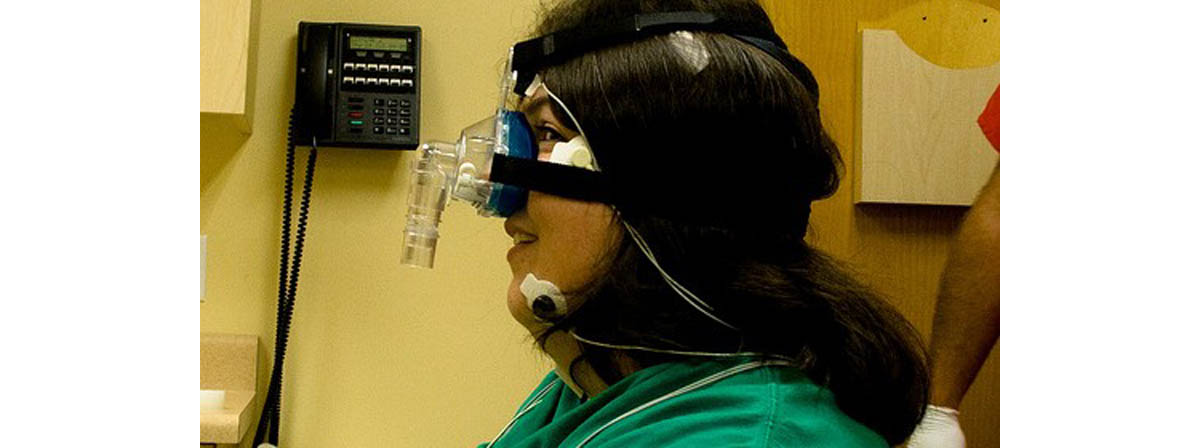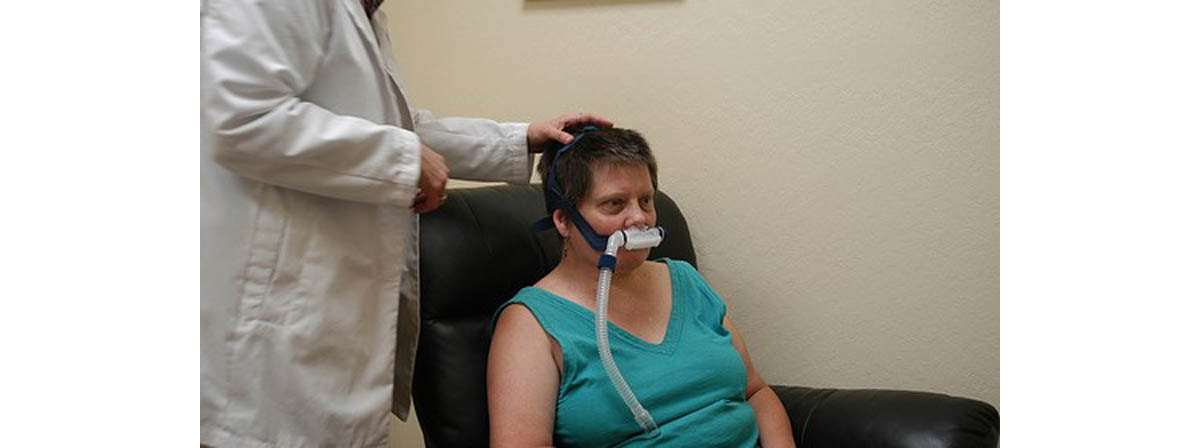People who snore don't have it easy. Rejected by spouses and other sleeping partners and often the butt of jokes, snorers usually don't get good sleep. People who snort and snore and toss and turn all night long generally suffer chronic sleep deprivation and daytime fatigue. And even worse, people who snort and snore because of obstructive sleep apnea are at elevated risk of developing type 2 diabetes.

What Is Obstructive Sleep Apnea?
Obstructive sleep apnea is a fairly common condition. Affecting up to seven percent of adult men in the United States, along with up to five percent of adult women, it's a condition that has a profound impact on sufferers' quality of life.
The walls of the throat have to be flexible to allow us to swallow when we eat or drink but to keep foreign objects and water out of the lungs at other times. Sometimes the throat become so flexible that it collapses under the weight of the muscles and fat around the neck when the body is a lying-down, supine position. The flow of air from the nose or mouth to the lungs is interrupted for 1, 2, 10, even up to 60 seconds, until finally so much pressure builds up from the lungs that air is exhaled with a loud snore or snort.
There may be normal breathing that lasts for a few seconds to as long as a few hours, but for many people whose throats are obstructed by "floppy" tissue, breathing ceases hundreds of times every night. People who have obstructive sleep apnea usually don't completely wake up during the night when their breathing is interrupted by the condition, but often the people around them are unable to sleep at all.
What Are the Symptoms of Obstructive Sleep Apnea?
Although your first thought, upon watching footage (with audio!) of someone with obstructive sleep apnea is likely to be "what a nuisance", obstructive sleep apnea is more than just annoying. It's potentially deadly. Among the far-ranging symptoms of nocturnal sleep apnea are:
- Restless sleep, lots of tossing and turning.
- Waking up in the morning feeling like you only just went to bed — no restorative sleep, in other words.
- Morning headache.
- Daytime sleepiness.
- Dry mouth and lips.
- Bad breath, caused by drying out of a mouth that remains open more than it should.
- High blood pressure, caused by the heart's need to pump poorly oxygenated blood harder at night.
- Getting up to urinate in the middle of the night, caused by the excess flow of blood through the kidneys caused by high blood pressure.
- Short-term memory problems.
- Hypercoagulation disorders, a tendency of the blood to form clots.
- Excessive daytime sleepiness doesn't just impact productivity and mood, but can also result in poor muscle coordination, bad judgment, and a tendency toward having accidents.
That's not all. Type 2 diabetes and overweight are also both closely associated with obstructive sleep apnea. Losing weight usually relieves obstructive sleep apnea, and treating obstructive sleep apnea, whether by losing weight or by use of a CPAP machine, usually relieves the insulin resistance that causes diabetes.
What Doctors Know About Sleep Apnea and Diabetes
Over the years, medical researchers have made a number of observations about people who have obstructive sleep apnea. Sufferers of obstructive sleep apnea typically:

- Weigh more. It's relatively rare for a morbidly obese or even moderately obese person not to suffer sleep apnea.
- Have high blood pressure. People who have sleep apnea are about 30% more likely to be on drugs for hypertension.
- Have to use inhalers for asthma. About twice as many people who have sleep apnea have to use asthma inhalers.
- Take statin drugs for high cholesterol (or because they have had a heart attack even if they don't have "high" cholesterol).
- Smoke. People who have sleep apnea are about four times more likely to be smokers than people who do not.
- Take thyroid medication. People who have sleep apnea are about twice as likely to take Synthroid thyroid replacement hormone.
- Don't use any kind of hormone replacement. There's a 5 to 1 difference in the use of estrogen and testosterone replacement therapy among people who don't have sleep apnea and people who do.
- Among women, aren't on the Pill. There's a 6 to 1 difference in the use of the Pill for contraception among women who don't have sleep apnea and women who do.
The picture that emerges is that people who have obstructive sleep apnea should also tend to have diabetes, but do they really? A group of researchers in the USA, Italy, and Germany called the Sleep Extension Study Group and the Sleep Extension Study Group tested this idea by recruiting people who had sleep apnea to be tested for insulin resistance with a very simple method most doctors ignore. They tested blood sugar levels after meals as well as fasting blood sugar levels taken before breakfast.
The researchers in three countries found that the worse the sleep apnea, the higher the blood sugar spikes after meals. These "post-prandial" blood sugar spikes are particularly dangerous because they cause muscle and fat cells to "shut down" their responses to insulin. In turn, the pancreas makes more insulin to transport the same amount of glucose from digested food, and the muscle and fat cells shut down even more insulin receptors. Insulin resistance gets worse and worse. Eventually the pancreas just cannot make enough insulin to keep up with rising blood sugar levels and even fasting blood sugar levels, the blood sugars taken first thing in the morning, are obviously high. In most type 2 diabetics, however, blood sugar abnormalities after meals are apparent years before fasting blood sugars, the blood sugars doctors usually test, are abnormally high.
The researchers found that there is a way to stop the downward spiral of sleep apnea, insulin resistance, and diabetes. Correct the sleep apnea, and you correct the diabetes. It isn't about sleeping more, but it is about sleeping better, with fewer interruptions of sleep due to snores, snorts, tossing, and turning. When breathing is continuous throughout the night, the adrenal glands put our fewer stress hormones, the immune system produces less inflammation, and maybe--or maybe not--weight goes down. But whether obstructive sleep apnea is treated with CPAP or with weight loss, or both, with better breathing, blood sugar regulation also improves.
- Cizza G, Piaggi P, Lucassen EA, de Jonge L, Walter M, Mattingly MS, Kalish H, Csako G, Rother KI
- Sleep Extension Study Group. Obstructive sleep apnea is a predictor of abnormal glucose metabolism in chronically sleep deprived obese adults. PLoS One. 2013 May 29. 8(5):e65400. doi: 10.1371/journal.pone.0065400. Print 2013. PMID: 23734252.
- Gilardini L, Lombardi C, Redaelli G, Vallone L, Faini A, Mattaliano P, Parati G, Invitti C. Glucose tolerance and weight loss in obese women with obstructive sleep apnea. PLoS One. 2013 Apr 17. 8(4):e61382. doi: 10.1371/journal.pone.0061382. Print 2013.
- Photo courtesy of Nicole Mays by Flickr : www.flickr.com/photos/mnicolem/2700316971/
- Photo courtesy of Michelle Ress by Flickr : www.flickr.com/photos/safoocat/1384616196/


Your thoughts on this